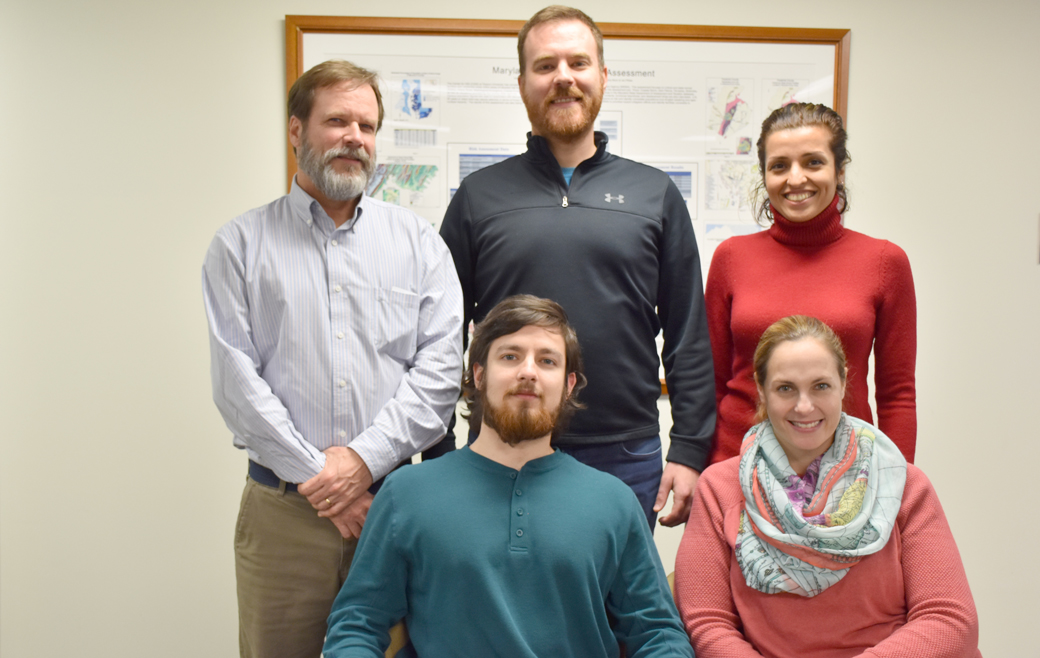Staying ahead of the Surge
Towson University CGIS has helped develop a Climate Impact Visualization tool to help with understanding coastal flooding.
By David Sides on January 3, 2018

“This article was originally published in the TU Innovates Blog on Dec. 13, 2017”
From the tip of Maine to the coast of Florida, the cold winter weather has brought snow to the Atlantic coast of the United States. And while places like Tallahassee are seeing snow for the first time in over two decades, it was just a few months ago that the Atlantic Coast was dealing with hurricanes.
September 2017 was the most active month on record for Atlantic Hurricanes. Hurricanes Irma, Maria, and Jose slammed parts of the east coast and Puerto Rico, bringing with them intense winds and destruction.
But, according to the National Hurricane Center, it is storm surge, the abnormal rise of water generated by a storm above the predicted tide, produced by hurricanes that is often the greatest threat to life and property. Understanding storm surge is important for communities across the country and to much of Maryland.
That’s why Towson University’s Center for GIS (CGIS) has teamed with Intelligent Automation Incorporated (IAI), to develop a Climate Impact Visualization (CIV) tool designed to increase understanding among planners and emergency service personnel of the progression, extent and impacts of coastal flooding related to storm surge.
This partnership pairs IAI’s Unity 3-D game engine with aerial imagery, LiDAR elevation data, and National Weather Service predictive storm surge inundation model output. The result is an interactive means to navigate and explore areas inundated at varying depths of flooding.
Project study sites include Annapolis, Baltimore, Ocean City, Oxford and Crisfield.
The CIV tool integrates real world GIS data with gaming technology to place the user at the controls in a series of flooding event animations. Using keyboard controls, the user navigates above the 3-D study site for a 360 degree, bird’s-eye view as flood waters increase in 6-inch increments, offering a unique and valuable perspective on the progression of flood inundation for a given area. The CIV 3-D inundation animation is paired with a synched 2-D rendering in a side by side window, providing the user with a simultaneous, traditional map view of the areas flooded as water depth increases.
The perspectives offered by CIV are useful at multiple levels, from helping to assign emergency service resources and prioritize actions in advance of an expected event, to facilitating planning, zoning, and shoreline defense strategies to mitigating against anticipated sea level rise, coastal erosion and flood occurrence.
The goal of this CGIS-IAI collaboration is to demonstrate the utility of this proof-of-concept 3-D visualization in hopes that it can be adopted in Maryland, as well as in other areas at risk of coastal flooding from storm surge. CIV’s interactive visualization approach presents a low barrier for user adoption and training. Furthermore, generation of a 3-D model of a city from LiDAR data is not expensive or time consuming.
TU’s Center for GIS is pleased to partner with IAI in this innovative marriage of technologies to produce a tool with the potential to enhance local preparedness and defend against sea level rise and coastal flooding events.
David Sides is a Project Manager at Towson University’s Center for GIS. He currently manages a variety of projects, working with teams of GIS specialists, application developers, and IT staff in the creation and deployment of locational technology solutions.